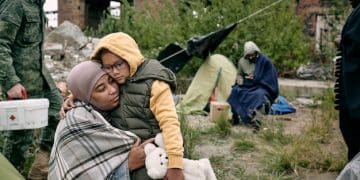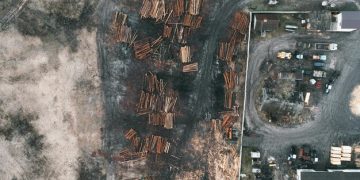US Government Coordination in Domestic Humanitarian Crises: An Overview
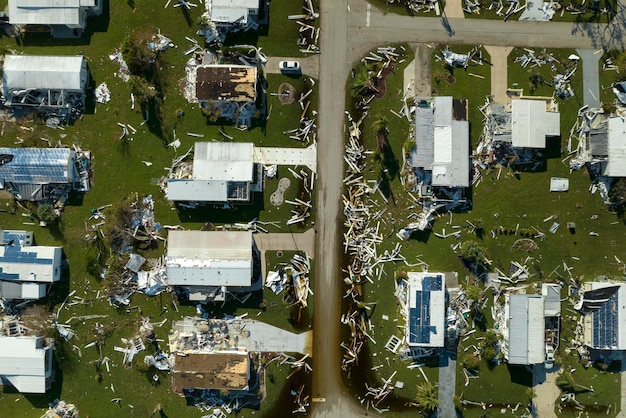
During domestic humanitarian crises, the US government coordinates with international organizations through legal frameworks, collaborative agreements, and resource sharing to provide effective and comprehensive aid.
When disaster strikes on US soil, how does the government ensure a swift and effective response? The answer lies in the intricate coordination between the US government and international organizations during domestic humanitarian crises. Let’s delve into how this collaboration unfolds to provide aid and support to those in need, understanding that the situation involves complex legal frameworks, established collaborative agreements, and the pivotal sharing of resources.
Understanding the Legal Framework for Disaster Response
The legal framework governing disaster response in the US is complex, designed to balance federal authority with state and local control while enabling cooperation with international bodies. This framework defines the roles and responsibilities of various agencies and organizations during times of crisis, ensuring that aid is delivered efficiently and effectively.
The Stafford Act and Federal Authority
The Robert T. Stafford Disaster Relief and Emergency Assistance Act serves as the cornerstone of federal disaster response. It authorizes the President to declare major disasters or emergencies, triggering federal aid to supplement state and local efforts. This act also outlines the process for requesting and receiving federal assistance.
State and Local Control
While the federal government plays a crucial role, state and local authorities maintain primary responsibility for disaster response. The Stafford Act emphasizes that federal assistance is supplementary, reinforcing the principle that local resources should be exhausted before federal aid is requested. This ensures that community-level needs are addressed effectively.
International Agreements and Treaties
The US government has entered into various international agreements and treaties that facilitate cooperation during disasters. These agreements establish protocols for sharing resources, coordinating efforts, and providing assistance across borders. Understanding these agreements is vital for effective crisis management.
- International Health Regulations (IHR): These regulations, overseen by the World Health Organization (WHO), provide a framework for coordinating responses to public health emergencies of international concern.
- Memoranda of Understanding (MOUs): The US government often signs MOUs with specific international organizations to formalize collaborative relationships and outline procedures for joint operations during crises.
- Bilateral Agreements: These agreements with individual countries can streamline the provision of aid and support across borders, fostering stronger partnerships in times of need.
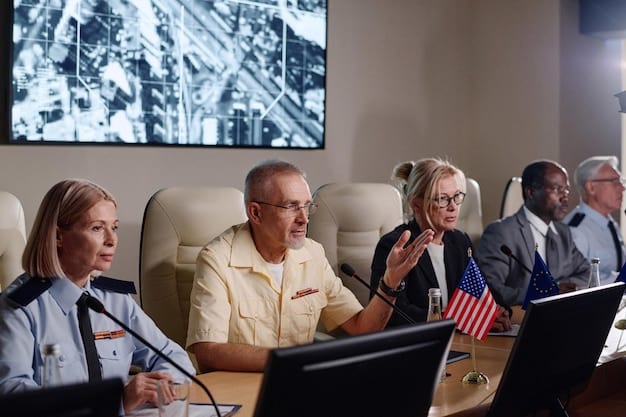
The legal framework is not static; it evolves through experience and adaptation to new challenges. Continuous review and refinement are essential to ensure that the US is well-prepared to respond to future crises in coordination with international partners.
Key US Government Agencies Involved in Coordination
Several US government agencies play pivotal roles in coordinating with international organizations during domestic humanitarian crises. These agencies, each with specific responsibilities, work together to ensure a comprehensive and effective response to disasters.
Federal Emergency Management Agency (FEMA)
As the primary federal agency responsible for disaster response, FEMA leads the coordination efforts with international organizations. FEMA works to align international resources with national priorities, helping to integrate aid efforts into the overall response strategy.
Department of State
The Department of State manages diplomatic relations and facilitates communication with foreign governments and international organizations. It plays a crucial role in negotiating agreements, coordinating international assistance, and ensuring that the US response aligns with international norms and standards.
Department of Defense (DOD)
The DOD provides logistical support, security assistance, and specialized capabilities during disasters. The DOD coordinates with international military and humanitarian organizations to ensure that its resources are deployed effectively and in accordance with international protocols.
These agencies collaborate closely, often through interagency task forces and joint operations centers. This collaborative approach ensures that resources are used efficiently, and that response efforts are aligned to meet the most pressing needs.
- National Response Framework (NRF): This framework outlines how the federal government coordinates with state, local, tribal, and private-sector entities, including international organizations, during domestic incidents.
- Emergency Support Functions (ESFs): The NRF organizes response activities into 15 ESFs, each led by a primary federal agency responsible for coordinating specific aspects of the response, such as transportation, communication, or public health.
By working in tandem, these agencies create a unified and effective response network that can address the diverse challenges posed by humanitarian crises.
International Organizations and Their Roles
International organizations bring unique expertise, resources, and capabilities to disaster response efforts. Their involvement can significantly enhance the effectiveness and reach of aid, particularly in situations where local resources are overwhelmed.
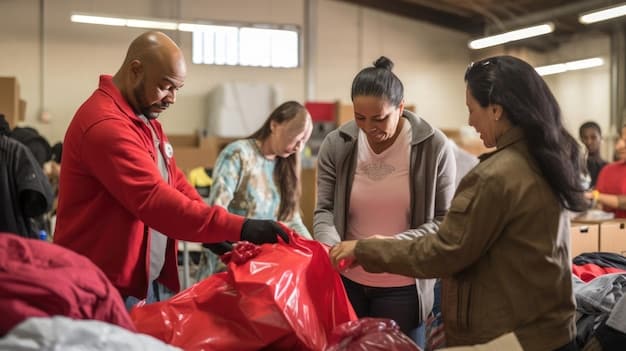
The United Nations (UN)
The UN plays a central role in coordinating international humanitarian assistance. Various UN agencies, such as the Office for the Coordination of Humanitarian Affairs (OCHA) and the United Nations Development Programme (UNDP), work to mobilize resources, provide technical support, and ensure that aid is delivered in a coordinated and impartial manner.
The World Health Organization (WHO)
The WHO provides technical expertise, monitors public health risks, and coordinates international health responses during crises. The WHO’s involvement is particularly critical in situations involving disease outbreaks or other public health emergencies.
International Red Cross and Red Crescent Movement
The International Red Cross and Red Crescent Movement offers humanitarian assistance, disaster relief, and support to vulnerable populations. National Red Cross societies, such as the American Red Cross, work closely with their international counterparts to provide a coordinated response to disasters.
These organizations often work in partnership with US government agencies, leveraging their respective strengths to deliver aid more effectively.
- Needs Assessments: International organizations can conduct rapid needs assessments to identify the most pressing needs of affected populations, helping to inform response strategies.
- Technical Assistance: They provide technical expertise in areas such as water and sanitation, shelter, health, and logistics, enhancing the quality and effectiveness of aid.
- Resource Mobilization: International organizations can mobilize resources from a global network of donors and partners, supplementing domestic resources and ensuring that aid is sustained over time.
By integrating the capabilities of international organizations, the US government can build resilience and provide comprehensive support to communities affected by disasters.
Challenges in Coordination and Potential Solutions
Despite the robust framework for coordination, several challenges can hinder effective collaboration between the US government and international organizations during domestic humanitarian crises. Addressing these challenges is essential for improving response effectiveness.
Communication Barriers
Communication barriers, including language differences, technological incompatibilities, and bureaucratic hurdles, can impede the flow of information and coordination of activities. Streamlining communication channels and establishing clear protocols for information sharing are crucial for overcoming these barriers.
Bureaucratic Processes
Complex bureaucratic processes and regulatory requirements can delay the delivery of aid and hinder coordination efforts. Simplifying these processes, streamlining approval procedures, and fostering greater flexibility can accelerate the response and enhance its effectiveness.
Cultural Differences
Cultural differences and varying organizational cultures can lead to misunderstandings and friction between different actors. Promoting cultural awareness, fostering mutual respect, and building trust are essential for creating a collaborative environment.
To address these challenges, several solutions can be implemented to improve coordination and collaboration.
Enhancing Interoperability
Investing in interoperable communication systems, developing common data standards, and promoting joint training exercises can enhance coordination and collaboration between the US government and international organizations. This includes promoting cultural awareness and mutual understanding.
Streamlining Regulatory Procedures
Streamlining regulatory procedures, simplifying approval processes, and providing greater flexibility to response agencies can accelerate the delivery of aid and improve overall effectiveness. This also involves ensuring that international agreements are up-to-date and reflect current best practices.
Building Stronger Partnerships
Investing in long-term partnerships, fostering trust-based relationships, and promoting joint planning exercises can strengthen coordination and collaboration. This includes establishing clear roles and responsibilities for each actor and promoting information sharing.
Case Studies of US Government and International Organizations Collaboration
Examining past instances of collaboration between the US government and international organizations during domestic humanitarian crises provides valuable insights into best practices and lessons learned, highlighting the importance of effective coordination.
Hurricane Katrina (2005)
Following Hurricane Katrina, international organizations such as the Red Cross and the UN provided significant assistance to affected communities. Challenges in coordination, including communication barriers and bureaucratic hurdles, highlighted the need for improved interoperability and streamlined procedures.
Hurricane Sandy (2012)
In the aftermath of Hurricane Sandy, international organizations worked closely with FEMA and other US government agencies to provide relief and support. Lessons learned from Katrina led to improved coordination and a more effective response, particularly in the area of resource mobilization and distribution.
The Ebola Response (2014)
When cases of Ebola were confirmed in the United States, the WHO and other international health organizations provided technical assistance, epidemiological support, and medical expertise. This collaboration helped to contain the spread of the disease and protect public health.
These case studies underscore the importance of effective coordination and collaboration between the US government and international organizations during domestic humanitarian crises. They also highlight the need for continuous improvement and adaptation to new challenges.
- Pre-Disaster Planning: Engaging in joint planning exercises and simulations before a disaster strikes can improve coordination and response effectiveness.
- Real-Time Information Sharing: Establishing real-time information sharing platforms can enhance situational awareness and facilitate decision-making.
- After-Action Reviews: Conducting thorough after-action reviews and incorporating lessons learned into future planning can improve performance over time.
By learning from past experiences and adapting to new challenges, the US government and international organizations can strengthen their collaboration and better protect communities affected by disasters.
The Future of US Government and International Coordination
The future of coordination between the US government and international organizations in domestic humanitarian crises will likely be shaped by emerging challenges and opportunities. Anticipating future trends and adapting strategies accordingly is essential for maintaining effective response capabilities.
Climate Change and Increased Disaster Frequency
Climate change is expected to increase the frequency and intensity of natural disasters, placing greater strain on response systems. Strengthening international cooperation and building resilience at the local level will be critical for managing the growing risks.
Technological Advancements
Technological advancements, such as artificial intelligence, remote sensing, and big data analytics, offer new opportunities to improve disaster preparedness, response, and recovery. Leveraging these technologies effectively will require collaboration between government, industry, and international organizations, especially in sharing data and resources.
Evolving Security Threats
Evolving security threats, such as cyberattacks and terrorism, can complicate disaster response efforts and require closer coordination between security agencies and humanitarian organizations. Adopting a comprehensive, multi-sector approach to disaster management is essential for addressing these complex challenges.
The future of US government and international coordination will depend on several key strategies.
- Investing in Resilience: Prioritizing investments in resilience-building measures at the local level can reduce the impact of disasters and enhance community self-sufficiency.
- Strengthening Global Partnerships: Fostering stronger partnerships with international organizations, foreign governments, and civil society groups can improve coordination and resource mobilization.
- Promoting Innovation: Encouraging innovation in disaster management technologies and practices can enhance response effectiveness and efficiency.
By anticipating future trends, adapting strategies, and investing in resilience, the US government and international organizations can strengthen their collaboration and better protect communities affected by disasters in the years to come.
| Key Point | Brief Description |
|---|---|
| 🤝 US Legal Framework | Governs disaster response and international cooperation. |
| 🌍 International Organizations | UN, WHO, Red Cross provide resources and expertise. |
| 🚨 Challenges | Communication, bureaucracy, and cultural differences. |
| 🌱 Future Trends | Climate change, technology, and security threats. |
Frequently Asked Questions (FAQ)
▼
The Stafford Act is the primary law governing federal disaster relief. It authorizes the President to declare major disasters or emergencies, triggering federal aid to supplement state and local efforts.
▼
Key agencies include FEMA, the Department of State, and the Department of Defense. FEMA leads coordination, the State Department manages diplomatic relations, and the DOD provides logistical support.
▼
Communication barriers, such as language differences and technological incompatibilities, can impede the flow of information and coordination. Streamlining communication is vital.
▼
Organizations such as the UN, WHO, and the Red Cross provide expertise, resources, and support to enhance the effectiveness of disaster response efforts domestically.
▼
Future trends include climate change increasing disaster frequency, technological advancements providing new tools, and evolving security threats necessitating enhanced collaboration.
Conclusion
Effective coordination between the US government and international organizations is essential for responding to domestic humanitarian crises. By addressing challenges, learning from past experiences, and adapting to future trends, the US and its international partners can continue to improve their collaboration and better protect communities in times of need.
